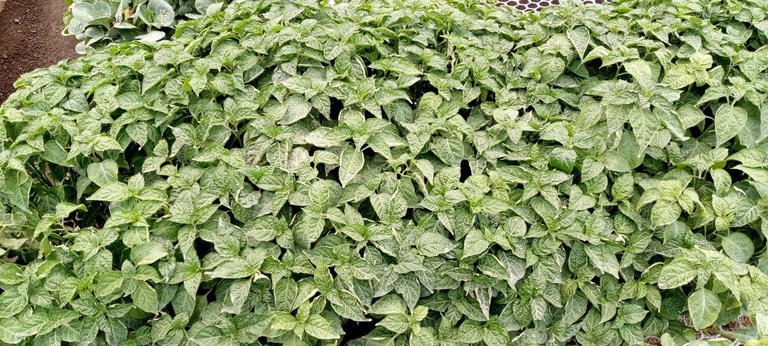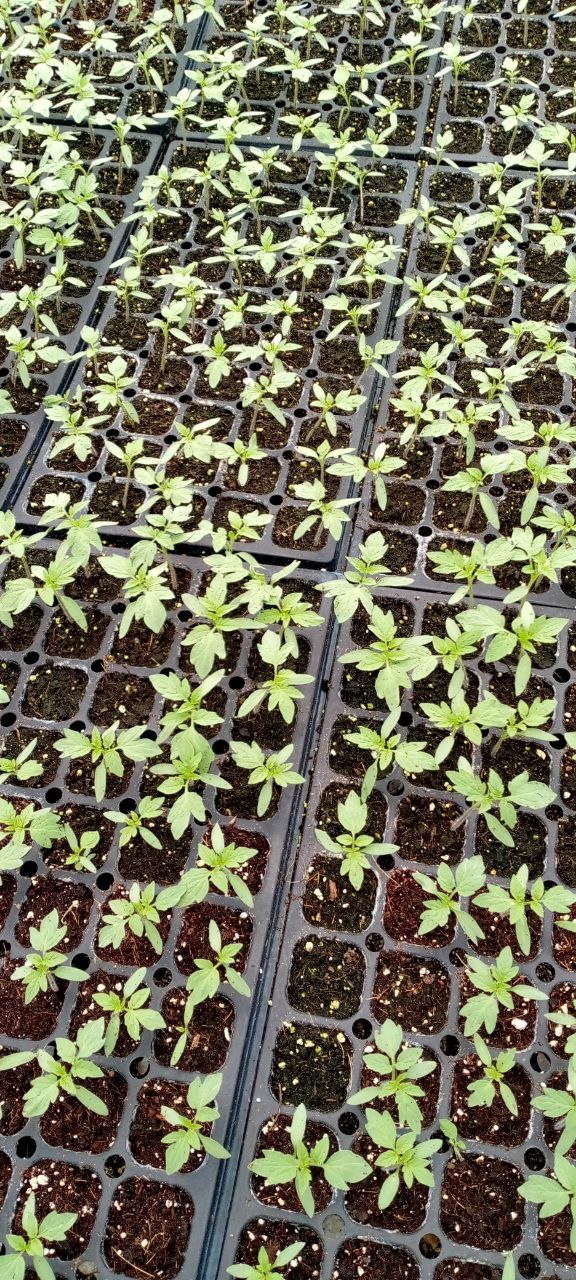Field trip to El Negrete trading company, tomato cultivation (eng/spa)
A few months ago I went on a field trip to El Negrete trading company, where among the vegetables they showed us was tomato cultivation.
They showed us everything required to achieve a successful production, starting with the seedbeds, in trays a good sandy-lomitic substrate is placed, since they fix a large amount of nutrients that are gradually released. The use of seedlings allows to obtain disease-free seedlings, after 5 to 7 weeks the seedlings are taken to the field after showing a few true leaves, 3 to 5 leaves and slippers should measure 20 cm. For a good seedling development, a night climate of 15 degrees is needed.

tomato cultivation
There are many variables that can be included in the development of the crop such as climate, nutrients, soil type, plant spacing, etc.
To help the transplants to acclimatize they should be induced a water stress, this hardens or strengthens them so they can get used to an outdoor environment, this stress is done by gradually reducing the irrigation gradually, this is done 13 to 15 hours before transplanting and is turned on again at the end.
Then the plantings are made, marks are made to locate each plant and holes are made where each one will go. The distance between plants is 45-61 cm and between the rows is 122-183 cm, these distances vary according to the variety of tomato as some grow more than others, also these separations help each flat receives enough light and air and reduces the chances of disease development. The depth at which each plant is planted is 8 to 10 cm, this helps them grow faster.

tomato seed
It is a delicate crop that requires a series of specific cares, these are:
- A soil analysis, this allows to know what nutrients, minerals are required, pH level and amount of salts, areas of low productivity should be analyzed.
- It needs nitrogen, phosphorus, potassium, magnesium, boron, zinc, manganese and molybdenum. Phosphorus and nitrogen are vital in the first weeks in the field.
To keep the soil moist, mulch should be used. It is made of organic material and should measure 5 cm above the root layer of the plant. Material made from grass or shredded bark is used as an insulator to prevent the soil temperature from fluctuating too much, as well as to suppress weeds and water loss due to evaporation.

tomato seedlings
The plants should be pruned when the flowers come out, ideally in June and July, pruning twice every two weeks until the end of the vegetative period.
Among the diseases that the crop may face are late blight, gray mold, atractnosis, etc. Late blight causes greenish spots that turn blackish brown and have an oily appearance, lesions on stems, and golden spots on fruit that cause fruit rot. It is controlled by inspecting seedlings before transplanting, applying protective fungicides before transplanting.

tomato seedbed
There are tobacco bugs that also attack tomato, they do it in the fruit stage because it serves as food, it is avoided using crop rotation.

selfie in practice
It is a very interesting crop, the way it develops and how it is cared for to achieve a good product for everyone.
Versión Español
Hace unos meses fui a un viaje de campo a la Comercializadora el Negrete, donde entre las hortalizas que nos mostraron estaba el cultivo de tomate.
Nos mostraron todo lo requerido para lograr una producción exitosa, comenzando con los semilleros, en unas bandejas se coloca un buen sustrato arenoso- lomico ya que fijan una gran cantidad de nutrientes que se liberan gradualmente. El uso de semilleros permite obtener plántulas libres de enfermedades, luego de 5 a 7 semanas se llevan las plántulas a campo después de mostrar unas cuantas hojas verdaderas, de 3 a 5 hojas y las pantuflas deben medir 20 cm. Para un buen desarrollo de plántulas se necesita clima nocturno de 15 grados.

Cultivo de tomate
Hay muchas variables que pueden incluir en el desarrollo del cultivo como el clima, nutrientes, tipo de suelo, la separación entre las plantas, etc.
Para ayudar a los trasplantes a aclimatarse se les debe inducir un estrés hídrico, esto las endurece o fortalece para que puedan acostumbrarse a un entorno al aire libre, este estrés se hace reduciendo gradualmente el riego de forma gradual, esto se hace 13 a 15 horas antes de hacerse el trasplante y se vuelve a encender al final.
Luego se hacen las plantaciones, se hacen marcas para ubicar cada planta y se hacen los agujeros donde irán cada uno. La distancia entre plantas de entre es de 45-61 cm y entre las hileras es de 122-183 cm, estás distancias varían según la variedad de tomate ya que unas crecen más que otras, además estás separaciones ayudan a que cada plana reciba luz y aire suficientes y reduce las posibilidades de desarrollo de enfermedades. La profundidad a la que se siembra cada planta es de 8 a 10 cm, esto ayuda a que crezcan más rápidamente.

Semilla de tomate
Es un cultivo delicado que requiere de una serie de cuidados específicos, estos son:
- Un análisis de suelo, esto permite saber que nutrientes, minerales son requeridos, nivel de pH y cantidad de sales, se deben analizar las zonas de baja productividad.
- Necesita nitrógeno, fósforo, potasio, magnesio, boro, zinc, manganeso y molibdeno. El fósforo y nitrógeno son vitales en las primeras semanas en campo.
Para que el suelo permanezca húmedo se debe usar el mantillo, es de material orgánico y debe medir 5 cm sobre la capa radicular de la planta. Se usa material hecho de restos de grama o de corteza triturada, sirve como aislante evita que la temperatura del suelo fluctúe demasiado, también suprime la maleza y que se pierda agua por evaporación.

Plántula de tomate
Se deben podar las plantas al momento que salgan las flores, idealmente se hace en junio y julio, la poda dos veces cada dos semanas hasta que termine el periodo vegetativo.
Entre las enfermedades que puede enfrentar el cultivo está el tizón tardío, moho gris, atracnosis, etc. El tizon tardío causa manchas verdosas que se vuelven marrón negruzcas y tienen un aspecto aceitoso, lesiones en los tallos, y manchas doradas en frutos que los descomponen. Se controla inspeccionando plántulas antes del trasplante, aplicar fungicidas protectores antes del trasplante.

Semillero de tomate
Están las chinches del tabaco que también atacan tomate, lo hacen en la etapa de frutos ya que les sirve de alimento, se evita usando rotación de cultivos.

Selfie en la práctica
Es un cultivo muy interesante, la manera en cómo se desarrolla y como es cuidado para lograr un buen producto para todos.
¡Muchas gracias por tomarte el tiempo de leerme!
Thank you so much for taking the time to read me!
Traducido con DeepL / Translated with DeepL
Fotos de mi autoría, tomadas con mi celular TECNO SPARK Go 2023 / Photos of my authorship, taken with my TECNO SPARK Go 2023 cell phone.
Congratulations @favilan! You have completed the following achievement on the Hive blockchain And have been rewarded with New badge(s)
Your next payout target is 250 HP.
The unit is Hive Power equivalent because post and comment rewards can be split into HP and HBD
You can view your badges on your board and compare yourself to others in the Ranking
If you no longer want to receive notifications, reply to this comment with the word
STOPCheck out our last posts: